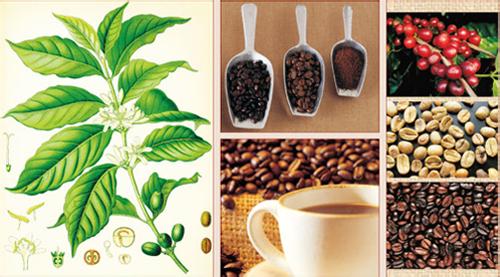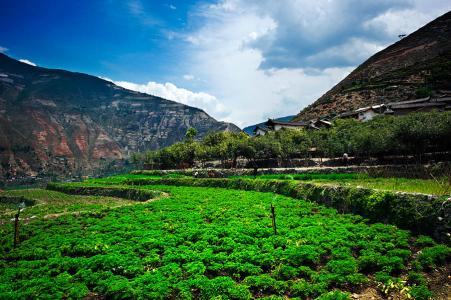High-yield cultivation techniques of Coffee in Hainan
In order to make the standardized planting technology of coffee easy to learn and understand, the Institute of Flavor and Beverage of the Academy of Thermal Sciences has also compiled "High-yield cultivation techniques of Coffee", "Diagram of High-quality and High-yield cultivation techniques of small-grain Coffee", "Coffee cultivation and Primary processing Technology", "standardized production Technology of small-grain Coffee" and other atlas and books, which are given to coffee planting free of charge. The "breeding of 8 clones of medium-grain coffee" developed by the institute won the third prize of national scientific and technological progress.
According to statistics, in 2014, the per unit yield of coffee in China reached 150.05 kg / mu, an increase of 66.72 kg / mu over 2001, an increase of 80.07%, and 217.9% higher than the world yield of 47.2kg / mu, ranking the leading position in the world.
Long Universe said that driven by science and technology, the main body of coffee production and management in China has changed from scattered small farmers to professional large farmers, professional cooperatives, leading enterprises and other new business entities, and the degree of production organization has been significantly improved. At the same time, the initial processing and intensive processing technology of coffee is constantly improving, and the quantity, quality and variety of products are also constantly enriched.
At present, coffee is mainly planted in single crop, with single community structure, poor biodiversity and weak ability to resist natural disasters and market risks. The reclamation quality of coffee garden is poor, the infrastructure is not matched, and the soil erosion is serious. The planting density was too high, and the yield decreased seriously in the later stage. New technologies such as soil testing formula and the integration of water and fertilizer are seldom applied and the popularization rate is not high. Lack of prediction and comprehensive prevention and control of diseases and insect pests, low temperature and cold injury, drought and so on. The standard of fresh fruit harvest is not standard, which leads to the decline of quality.
"from the two aspects of consumer demand and economic benefits, the development potential of the coffee industry is great." According to long Cosmos, the average annual growth rate of world coffee consumption is about 2.48%, while China's consumption growth rate is more than 10%. According to the current average yield per mu of 300jin, 40 yuan per jin purchase price calculation, excluding the production cost, the average benefit per mu is about 1200 yuan, there is still much room for improvement.
"although the prospect of coffee industry is promising, the problem of single variety also restricts the development of coffee industry in our country." Long Universe said frankly that at present, the Katim series of hybrid varieties account for more than 95% of the total area of coffee in China. This series of varieties have the advantages of rust resistance, short stalk, early production, high yield and quick effect, but they also have defects such as poor yield stability, easy premature aging and poor quality. With the extension of planting years and the differentiation of rust physiological races, this series of varieties have begun to show the degradation of rust resistance, and large-scale single variety planting also has the risk of low ability to resist drought, cold and other natural disasters. In terms of farming mode, coffee is mainly planted in a single crop, with poor biodiversity and weak ability to resist natural disasters and market risks.
Dakaihe Village, Simao District, Pu'er City, Yunnan Province is a fixed point village supported by science and technology of the Xiangyin Institute of the Academy of Thermal Sciences. A coffee professional cooperative was established in 2004, absorbing 363 members and covering an area of about 10,000 mu. Long Cosmos told reporters that through the promotion of compound cultivation, the village has reduced coffee longicorn beetle pests and black fruit disease, significantly improved the quality of coffee beans, and increased the yield benefit per mu to 2500 yuan.

Important Notice :
前街咖啡 FrontStreet Coffee has moved to new addredd:
FrontStreet Coffee Address: 315,Donghua East Road,GuangZhou
Tel:020 38364473
- Prev

Where do you produce coffee in China? where do you make coffee? how to make coffee?
Where does China produce coffee and how to brew coffee? China's coffee is mainly produced in Yunnan and Hainan. It is grown in Guangdong and Guangxi, but on a large scale.
- Next

Kenyan coffee processing characteristics Flavor description Grind scale Manor area Variety introduction
Kenyan Coffee Processing Features Flavor Description Grind Scale Estate Producing Area Variety Introduction The Kenyan government takes the coffee industry extremely seriously, and it is illegal to cut down or ring coffee trees here. Kenya's coffee buyers are world-class buyers of premium coffee, and no country grows, produces and sells coffee as consistently as Kenya. All coffee beans are first made
Related
- What brand of black coffee is the most authentic and delicious? what are the characteristics of the flavor of the authentic Rose Summer Black Coffee?
- Introduction to the principle and characteristics of the correct use of mocha pot A detailed course of mocha pot brewing coffee is described in five steps.
- Which is better, decaf or regular coffee? how is decaf made?
- How much is a bag of four cat coffee?
- How about four Cat Coffee or Nestle Coffee? why is it a cheap scam?
- Which is better, Yunnan four Cats Coffee or Nestle Coffee? How about cat coffee? is it a fake scam? why is it so cheap?
- How about Cat Coffee? what grade is a hoax? which instant coffee tastes better, four Cat Coffee, Nestle Coffee or G7 coffee?
- Process flow chart of coffee making-Starbucks coffee making process what coffee tastes good at Starbucks
- The top ten best coffee beans in the world Rose summer coffee or Tanzanian coffee tastes good
- Yunnan four cat coffee is good to drink?_four cat coffee is a big brand? four cat blue mountain coffee is fake?

